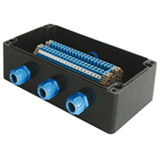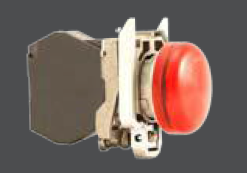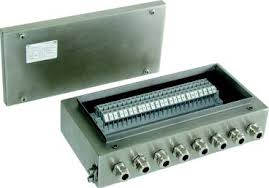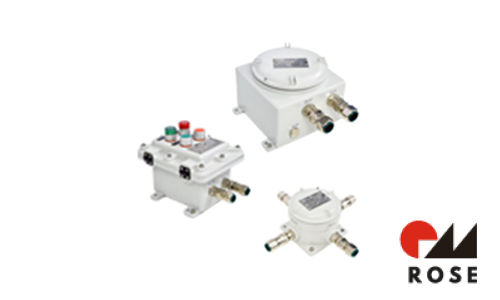Types of Ex protection
Oil & Gas, Petrochemical, Chemical & many Industries has presence of flammable liquids, gases, vapours, combustible dust, flying & fibers. These flammable substances in combination of ambient air form explosive atmosphere.
Industries cannot function without electrical & electronics equipment but industrial electrical & electronic equipment due to presence of arcing contacts and hot surface are a source of ignition to the explosive atmosphere causing explosion. Explosion protection techniques are applied to make these electrical and electronic equipment fit for operation in explosive atmosphere and such equipment are called Ex equipment. Ex enclosures of different types are frequently used for this purpose.
Explosion protection techniques are as under:
- You can contain the explosion within the enclosure.
- You can prevent explosion by eliminating the source of ignition.
- You can prevent explosion by limiting the energy of the source of ignition.
- You can prevent explosion by keeping explosive atmosphere outside the enclosure.
As per IECEx there are 10 ways listed below by which such enclosures may offer protection. However, some of these types offer protection against only Gas or Dust atmosphere and some of them offer protection against both Gas & Dust atmosphere:
A: Suitable for both Gas & Dust atmosphere:
1. Intrinsic Safety (Ex i): Explosion is prevented by limiting the energy of the ignition source. A safety barrier is invariably used to limit energy to intrinsically safe field device. Energy stored in IS device shall limited. Hot surface of electronic components must remain below the auto ignition temperature of the explosive atmosphere.

2. Purge protected (Ex p): Explosion is prevented by purging the explosive atmosphere and preventing its ingress by maintaining the over pressure of uncontaminated purge media. Thus explosive atmosphere does not come in contact with arcing and hot current carrying components. External surface temperature of purge protected enclosure must remain below auto ignition temperature of the explosive atmosphere.
3. Encapsulated (Ex m): Explosion is prevented by encapsulating arcing or hot current carrying components thus they do not come in contact of explosive atmosphere. External surface temperature of encapsulated surface must remain below auto ignition temperature of the explosive atmosphere.

4. Specially protected (Ex s): Equipment not covered in any of the recognised type of protection but other special techniques are used to make it safe for operation in explosive atmosphere. e.g. SF6 circuit breaker will qualify for specially protected.
B: Suitable for Gas atmosphere only:
5. Increased Safety (Ex e): This method of protection prevents explosions by eliminating any source of ignition. Thus no arcing components are permitted. Only certified electronics and terminals are permitted inside to ensure hot surface thereof do not become source of ignition by remaining within the auto ignition temperature of the explosive atmosphere. If an explosion was to occur inside, the enclosure will not be able to withstand it.

6. Flameproof (Ex d): These enclosures are certified to withstand internal explosions. They are mechanically designed to contain explosions and inbuilt flamepath ensures non-transmission of internal ignition. External surface temperature of flameproof enclosure must remain below auto ignition temperature of the explosive atmosphere.

7. Oil filled (Ex o): Prevention by stopping the explosive atmosphere from coming in contact with the source of ignition, by submerging the component in oil. External surface temperature of oil must remain below auto ignition temperature of the explosive atmosphere.
8. Sand filled (Ex q): Arcing inside enclosure is suppressed using quartz sand, thereby isolating the ignition source from explosive atmosphere. External surface temperature of sand filled enclosure must remain below auto ignition temperature of the explosive atmosphere.
Encapsulated (Ex m): Explosion is prevented by encapsulating arcing or hot current carrying components thus they do not come in contact of explosive atmosphere. External surface temperature of encapsulated surface must remain below auto ignition temperature of the explosive atmosphere
9. Non-sparking (Ex n): This method has 3 different approaches to protection.
- Ex nA: Protection by elimination of all ignition sources to prevent internal explosions, basically making it non-sparking. This protection method is now part of increased safety marked as Ex ec.
- Ex nC: Arcing devices are hermetically sealed, potted or enclosed. This protection method is now part of flameproof marked as Ex dc.
- Ex nR: Prevents explosions by restricting ingress of explosive atmosphere.
All Ex n enclosures are incapable of withstanding internal explosions.
C: Suitable for dust atmosphere only:
10. Dust ignition protection (Ex t): Enclosure is IP protected so that explosive dust layer or cloud is excluded from enclosure and hence it does not come in contact with ignition source contained in enclosure. External surface temperature of enclosure must remain below auto ignition temperature of the explosive dust atmosphere with margin of safety defined in standards.








